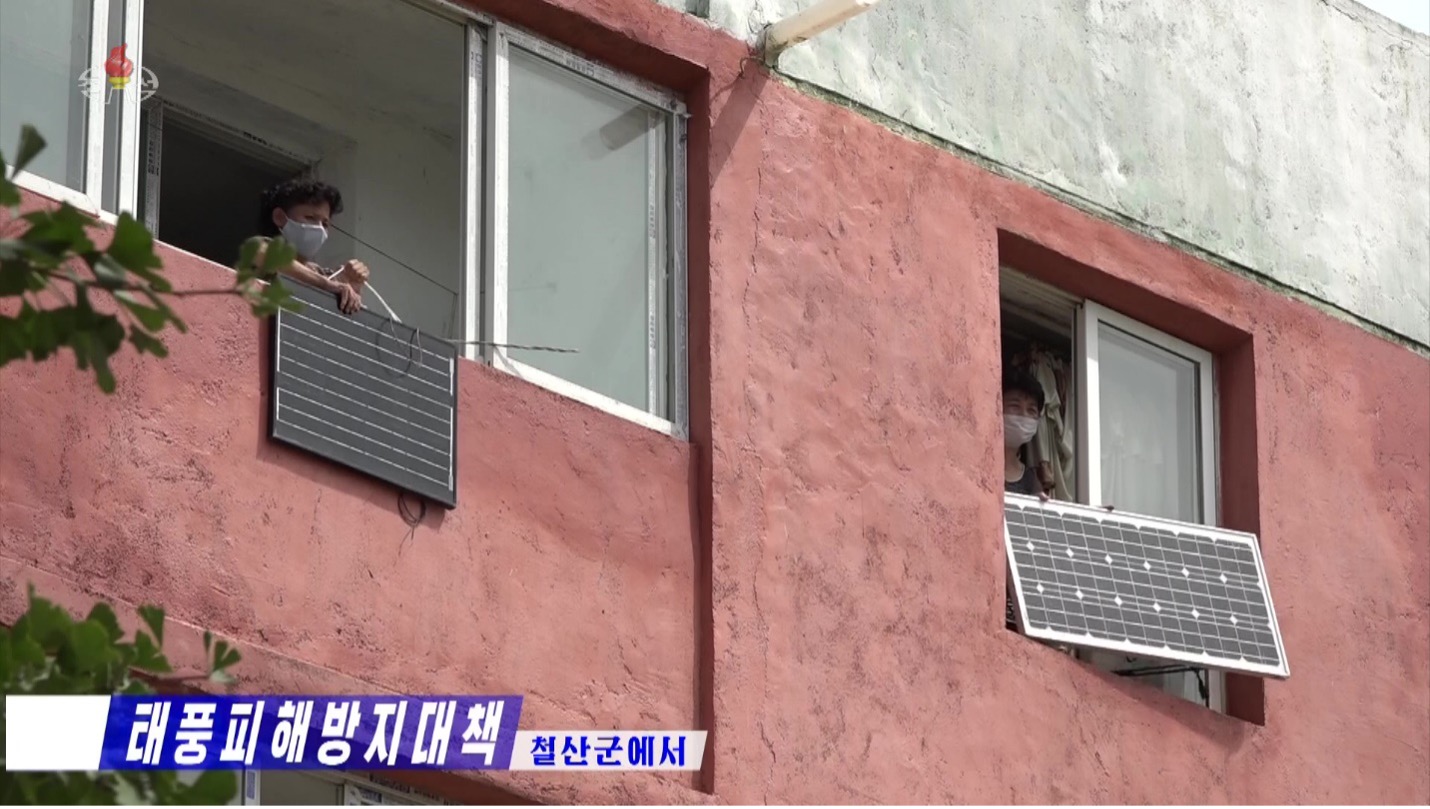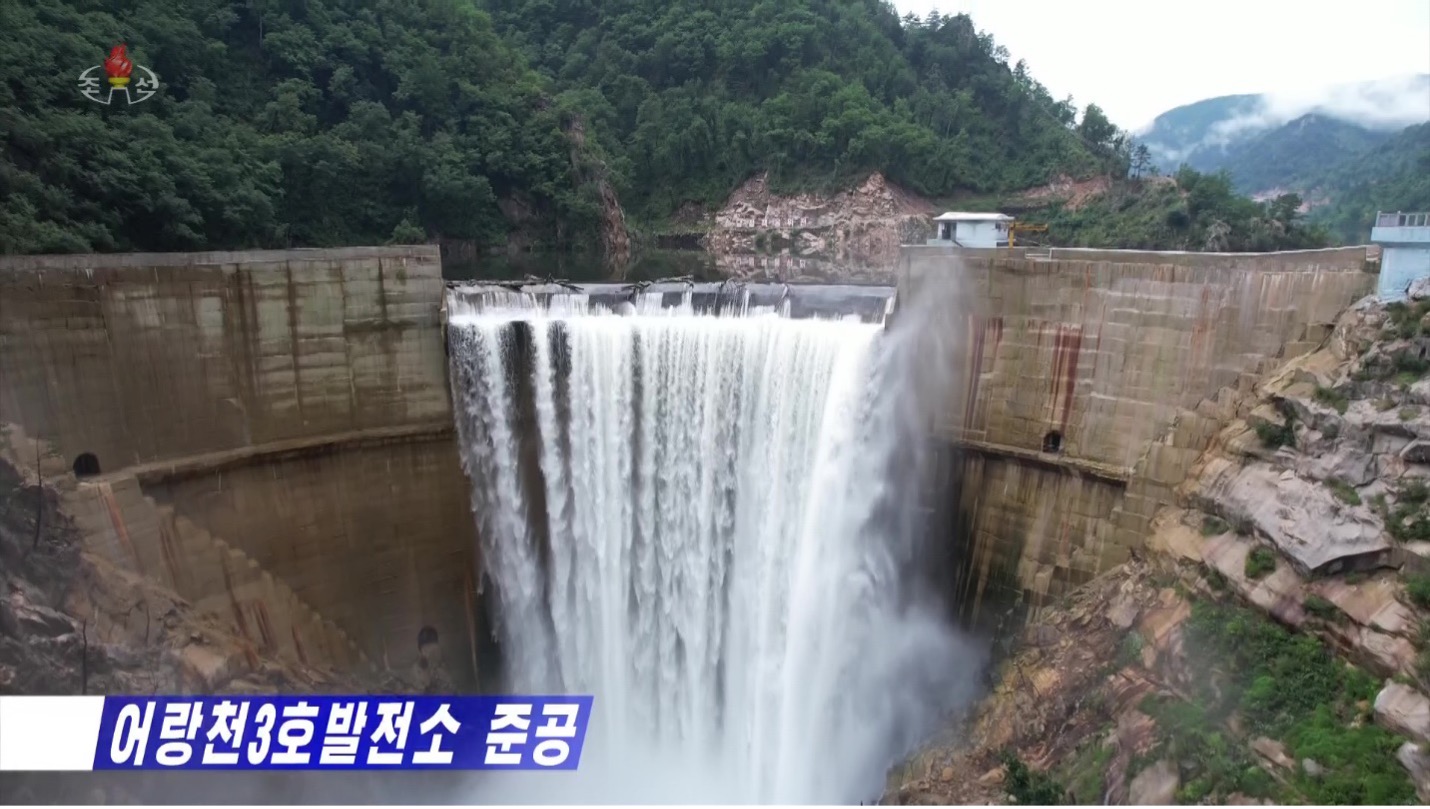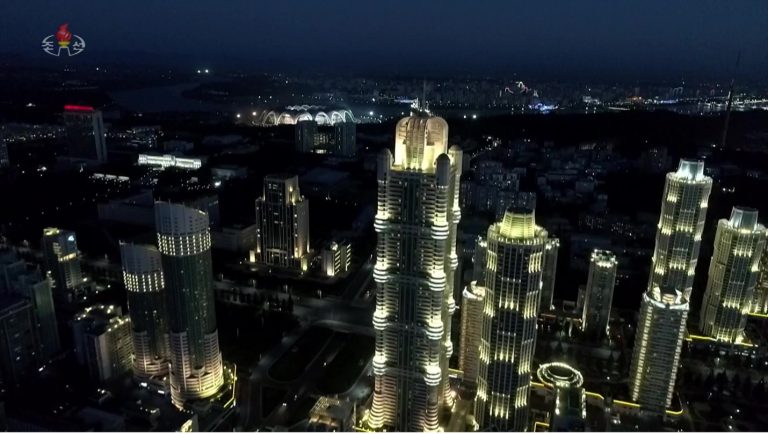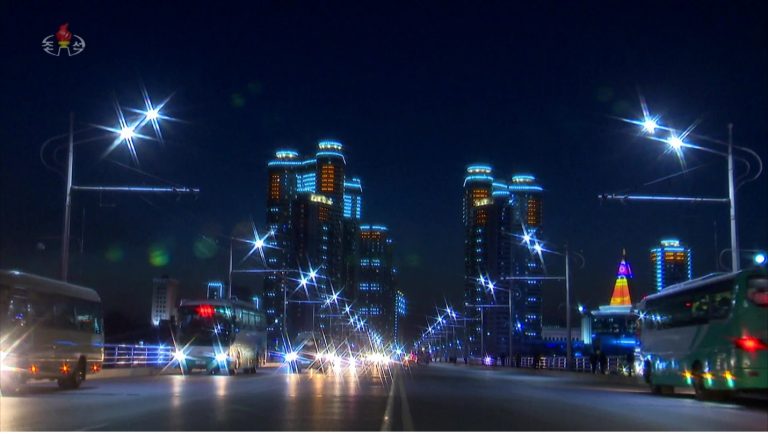North Korea’s Energy Sector: Defining the Landscape
Sprouting from rooftops and hanging from balconies, solar panels are no longer an unusual sight on homes across North Korea. In other parts of the world, the emergence of household solar panels has been part of a push for green energy solutions, but this is not the case in North Korea. Instead, the panels are a testament to the state’s chronic inability to provide adequate and consistent electricity to its citizens despite numerous power production projects attempted over the years.
While the regime regularly promises to solve the electricity problem, the vast majority of North Koreans remain severely energy deprived. Those in Pyongyang may get power every day, though with rolling blackouts. But for some in the more remote areas of the country, this could mean only getting power one day a year. The inability to meet energy demands and widely uneven distribution has held back the country’s economic development for decades, hampering industrial production and keeping living standards low for most of the population.
In this new series, 38 North will look at the current state of North Korea’s energy sector, including the country’s major hydro and fossil fuel power stations, the state’s push for local-scale hydro, the growing use of renewable energy and research and development into new energy sources.
Figure 1. North Koreans take in personal solar panels ahead of an approaching storm.

A History of Problems
North Korea’s energy problems—and the state’s promises to fix them—are almost as old as the country itself. After the liberation of the Korean Peninsula from Japanese colonialism in 1945, the northern half of the peninsula relied on its abundant water resources to generate electricity. Despite damage to several major hydroelectric power stations during the Korean War, a three-year recovery period following the Korean Armistice Agreement of 1953 allowed North Korea to restore its damaged power plants.
After that, the country set about expanding its electricity network to reach the entire country and power the national economy. From 1961 to 1967, North Korea focused on large-scale hydro and thermal plants to electrify its rail transport systems and pushed the power grid into every “ri” (village) in the country.
But things started to falter. Further expansion of the power system in the seven-year plan from 1978 to 1984 faced difficulties due to decreased coal production and the low quality of North Korean coal resources. The following seven-year plan from 1987 to 1993 faced further challenges caused by the collapse of the Soviet Union and economic liberalization of China—North Korea’s key trading partners and supporters at the time.
Under the Agreed Framework of 1994, the United States promised to provide North Korea with two 1-gigawatt light water nuclear reactors in exchange for Pyongyang abandoning its nuclear weapons ambitions. However, after the collapse of the Agreed Framework, reactor construction was suspended in 2003 and eventually terminated in 2006.
In the meantime, North Korea began instituting a new system of small- and medium-sized power plants in 2000. The scheme was intended to meet electricity demands in small factories and homes. This policy continues today, with new networks of small-scale hydropower plants that serve local areas and do not transmit large amounts of electricity across the nation, avoiding the problem caused by the country’s crumbling power transmission network.[1]
But these efforts have been woefully inadequate. Over the last four decades, North Korea’s total generating capacity has risen just 64 percent compared to a 1,275 percent rise over the same period in South Korea, according to estimates from Statistics Korea.
Figure 2. Growth in total electrical power generation capacity in North and South Korea.
Energy Supply Today
Fully understanding North Korea’s energy sector is difficult. The state does not release data about its power generation capacity, and foreign estimates can vary widely. Two of the most cited statistics come from Statistics Korea and the Nautilus Institute.
For 2020, Statistics Korea estimates North Korea’s total electricity supply at 23.9 terawatt hours (TWh), while Nautilus estimates only 14 TWh.
Both agree that hydro supplies the largest portion of electricity to the country and are in broad agreement on the amount. Statistics Korea estimates hydro supplied 12.8 TWh in 2020, while Nautilus estimated 10.7 TWh.
But the two diverge on assessments of the country’s thermal power production capacity, which consists mostly of coal-fired power plants. Statistics Korea estimates thermal power stations in North Korea supplied 11.2 TWh of electricity in 2020, while Nautilus estimates this at just 3.3 TWh. There is not enough information about the methodology of each survey to explain the difference.
The North Korean government does not release detailed data, but an official of the Ministry of Electric Power Industry was quoted in the magazine Korea Today in 2021 as saying 70 percent of the country’s energy came from renewables. That assertion seems to align more closely with the Nautilus estimates than those from Statistics Korea.
Figure 3. North Korean energy supply estimates from Statistics Korea and Nautilus Institute.
While the two organizations disagree on the overall power generation output, both agree that the amount of energy from hydro generation is slowly rising while that from thermal generation is slowly decreasing. The former is likely a result of a long-term emphasis on increasing power generation and several new hydropower stations coming online in the last few years.
Statistics Korea data from 2021 estimates a 26 percent jump in hydro generation to 16.1 TWh and a 16 percent drop in thermal generation to 9.4 TWh. According to the organization, overall generation rose a modest seven percent to 25.5 TWh.
While North Korea’s thermal power stations continue to play an important role in the state’s energy mix, the stations were built decades ago in collaboration with engineers from the former Soviet Union and China. The outdated technology makes them inefficient, and thermal capacity has not risen significantly in decades.
In contrast, hydropower takes advantage of North Korea’s numerous mountains and rivers but also has a major weakness. The frigid temperatures every winter freeze rivers or reduce water flow, decreasing electricity production when the country needs it the most.
Regardless, North Korea continues to invest in hydro projects, both large and small.
One major project—more than 40 years in the making—was finally completed last year. The Orangchon Power Station is a network of five stations in North Hamgyong Province that were completed in August 2022. Collectively, the five plants will contribute 134 megawatts to the national grid, according to state media reports.
The original construction order for the power plant was signed by Kim Il Sung on June 5, 1981, and included the large Phalhyang Dam and a 40-km subterranean waterway. Despite the massive project taking and the extremely long time from concept to completion, it will only increase national electricity production capacity by a modest 1.4 percent, according to national generation estimates from Nautilus Institute.[2]
Figure 4. The Phalhyang Dam at Orangchon Power Plant No. 3.

In recent years, the country has emphasized the need for smaller hydro plants that can be completed in a more reasonable time frame and feed local areas. Currently, groups of such smaller stations are being built in Kangwon and Jagang Provinces.
Other renewable energy sources, such as solar, wind and tidal, make up only a fraction of the national electricity supply. Despite early experiments with wind power, more recent efforts have focused on increasing solar energy production. The largest solar venture to date has been the North Phyongan Solar Plant, which consists of several thousand panels; this was built amid an increasing number of solar panels throughout the country on both commercial buildings and individual households.
Power for Profit
The country’s power shortages are exacerbated by the sale of electricity to China. Despite its domestic electricity shortage, North Korea is a net exporter of electricity to China. Electricity so far has not been sanctioned under United Nations Security Council Resolutions, and as such, has become a more important source of revenue generation for Pyongyang since foreign trade has declined over the last decade.
In 2021, North Korea sold 413 gigawatts (GWh) of electricity to China, worth $16.9 million, according to Chinese trade statistics. Based on Nautilus Institute estimates, that is about three percent of North Korea’s total power generation for the year.[3]
Figure 5. Estimates of North Korean electricity sales to China from Chinese trade statistics.
Admitting the Problem
North Korea rarely acknowledges the country’s power problems directly. For those who do not follow North Korea closely, it would be hard to tell how bad the situation really is. For instance, every night before the evening news, state TV fills a couple of minutes with beauty shots of Pyongyang at night, complete with lit-up monuments and skyscrapers with lights on in apartments. Other images show lit-up water fountains in the capital and a huge LED screen that now covers the front of the 100-story Ryugyong Hotel.
Figure 6. Pyongyang at night.
However, the problems can be inferred.
State media reports enthusiastically almost every week on increases in output from power stations—something that would not be newsworthy if supply was plentiful. Once, it even went into great detail about all the problems that came with a lack of electricity.
In 2003, faced with long delays in the construction of the two light water reactors under the Agreed Framework, state media sought to blame the US for its problems and, in doing so, listed the kind of failures it was facing.
The Korean Central News Agency reported an “acute shortage” of electricity in the country and cited disruption to public transportation, the delayed arrival of coal at thermal power stations, lower quality of goods from factories, and “difficulties to all sectors of the national economy” as a result of a lack of electricity. The article also said the “limited power supply to residential quarters interferes with the people’s cultural and emotional life” with disruption to restaurants, bathhouses and other public facilities.
Promises, Promises
Kim Jong Un highlighted the need for a more reliable electrical power supply at the Eighth Party Congress in January 2021, when he called on the industry to devise a long-term plan to fix the problem while also satisfying the immediate demand for more power. He was reported as saying:
The major task facing the electric power industry during the new five-year plan period is to readjust and reinforce its production foundations as a whole and expand them on a long-term basis while waging an increased production drive for meeting the immediate demand for electricity so as to reliably guarantee the stable development of the national economy and the material and cultured living of the people.
This was not the first time he had brought up the issue. The need to tackle power shortages has been a consistent theme within Kim Jong Un’s speeches that lay out national priorities. In addition to hydro, Kim has called for the development of a domestic nuclear power program and has pushed solar, wind and tidal power as ways to generate more electricity. However, it is unclear how much or how fast any of this can happen, especially given the dismal track record of the country’s previous power generation projects.
Going forward, the country will need massive investment and numerous power projects to satisfy even basic demand, let alone advance the economy. Where that funding or technical assistance will come from is entirely unclear, given the numerous restrictions on North Korea for its continued pursuit of nuclear weapons.
Next Steps
In the next installment of this project, we will examine the state’s solar energy policies and major solar projects, including the North Phyongan Solar Plant.
- [1]
See “North Korea’s Hydroelectric Power – Part I,” National Geospatial-Intelligence Agency’s Tearline.mil, July 4, 2019, https://www.tearline.mil/public_page/north-koreas-hydroelectric-power-part-i/; and “North Korea’s Hydroelectric Power – Part II,” National Geospatial-Intelligence Agency’s Tearline.mil, August 29, 2029, https://www.tearline.mil/public_page/north-koreas-hydroelectric-power-part-ii/.
- [2]
See “Kim Jong Un inspects hydropower plant construction site,” Pyongyang Times, July 17, 2018; and “Laying the Foundations of Energy Security for the DPRK,” David Von Hippel and Peter Hayes, Nautilus Institute, 286, April 2021, https://nautilus.org/wp-content/uploads/2021/04/DPRK-Energy-2020-Update-Main-Report-final.pdf.
- [3]


